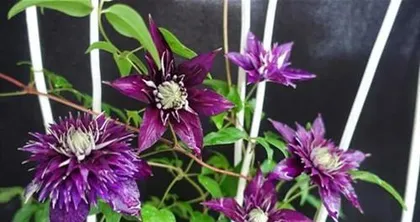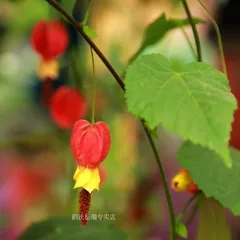Vining flowers are beautiful and unique plants that grow quickly and can be used to decorate courtyards, balconies, walls, and other places. Different vining flowers have different colors and shapes, meeting people's pursuit of a better life. However, how to correctly plant and maintain perennial vining flowers is a problem that many people face. This article will introduce you to some planting and maintenance techniques for perennial vining flowers to help you create the secret to a beautiful courtyard.

Choose a suitable planting environment
To grow healthy and beautiful vining flowers, you first need to choose a suitable planting environment. Most vining flowers prefer plenty of sunlight and moist soil, so you should choose a sunny, well-drained soil environment. At the same time, it should be noted that different vining flowers have different environmental requirements. For example, wisteria needs more space to grow, while climbing ivy is suitable for growing on walls and tree trunks.
Prepare the soil for vining flowers
The quality of the soil is crucial for the growth of vining flowers. To make vining flowers grow healthier, we need to prepare the soil for them. Choose soil rich in organic matter and apply appropriate fertilizer before planting. You can also mix some river sand or gravel into the soil to improve its aeration and drainage.

Correct planting method
The method of planting vining flowers is not much different from other plants. First, you need to put enough fertilizer and organic matter in the planting hole, then place the roots of the vining flower in the hole, gently compact the soil and water it. After planting, you need to set up a support for the vining flowers to ensure they can climb upwards.
Correct watering method
Most vining flowers like a humid environment, so they need to be watered moderately during the growing period. The frequency of watering can be determined according to the water-loving habits of the vining flowers, but overwatering should be avoided to prevent root rot.
Appropriate pruning and shaping
Vining flowers grow fast, so they need appropriate pruning and shaping. This not only beautifies the shape of the plant but also promotes the growth of new branches and leaves. When pruning, be careful not to damage the main trunk and major branches to avoid affecting the growth and development of the plant.

Prevent pests and diseases
Vining flowers are susceptible to pests and diseases, such as Japanese beetles and aphids. Therefore, it is necessary to take timely preventive and control measures, such as spraying pesticides and adjusting the balance of water and fertilizer. At the same time, it is also necessary to regularly clean up withered leaves and branches to prevent the growth of bacteria.
Appropriate fertilization method
Vining flowers have a high demand for fertilizer, so they should be fertilized in a timely manner according to different growth stages and needs. Before planting, base fertilizer can be applied, and after planting, appropriate fertilizer can be applied during the annual growth period. However, be careful not to over-fertilize to avoid harming the plant.
Necessary shading for vining flowers
In the hot summer, strong sunlight can damage vining flowers. Therefore, it is necessary to provide appropriate shading at the right time, such as using a shading net. However, be careful not to over-shade to affect the photosynthesis of the plant.
Reasonable transplanting time
Vining flowers need to be transplanted regularly to ensure healthy growth. The best time for transplantation is generally when the plant enters the dormant period or after the vigorous growth period ends. Be careful not to damage the roots and main trunk during the transplantation process.
Appropriate mulching and loosening of soil
Mulching and loosening the soil can improve soil aeration and drainage, and increase the growth rate and disease resistance of the plant. However, be careful not to mulch or loosen the soil too frequently or too deeply to avoid damaging the roots.
Choose a suitable support
Vining flowers need appropriate support to grow, so it is necessary to choose a suitable support. The choice of support should be adjusted according to the growth habits of the plant and the actual situation. For example, you can choose materials such as bamboo and wooden poles to make supports.
Reasonable light exposure time
Vining flowers have high requirements for light, so it is necessary to ensure their light exposure time. Generally, it is necessary to ensure sufficient sunlight exposure every day, but in summer, attention should be paid to avoiding strong sunlight at noon and in the afternoon, and appropriate shading measures can be chosen.
Reasonable planting density
The planting density of vining flowers has an important impact on their growth and development. Generally, the planting density should be determined according to the growth of the plant and the area of the land. Too dense planting density will affect the growth of the plant, while too sparse planting density can easily lead to a waste of land resources.
Reasonable plant combination
Perennial vining flowers can be combined with other flowers to form beautiful landscapes. For example, you can choose some succulents, ground cover plants, etc. to match with vining flowers to achieve the effect of beautifying the courtyard.
Planting and maintaining perennial vining flowers requires care and patience, but once successfully planted, you can enjoy the beauty and surprises they bring. During the planting process, attention needs to be paid to soil preparation, watering, pruning, pest and disease prevention, etc., to ensure the healthy growth and beautiful shape of the plants.